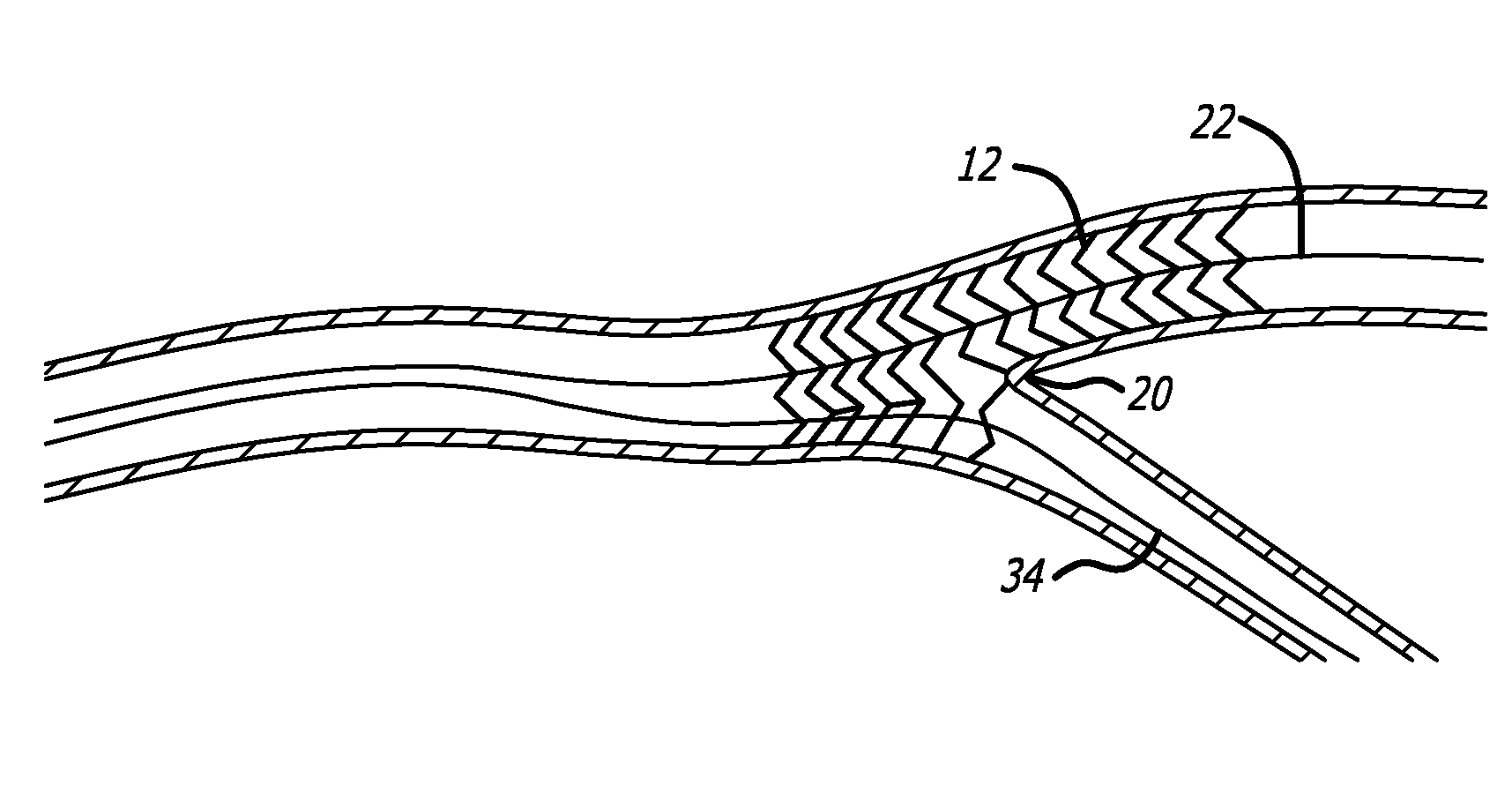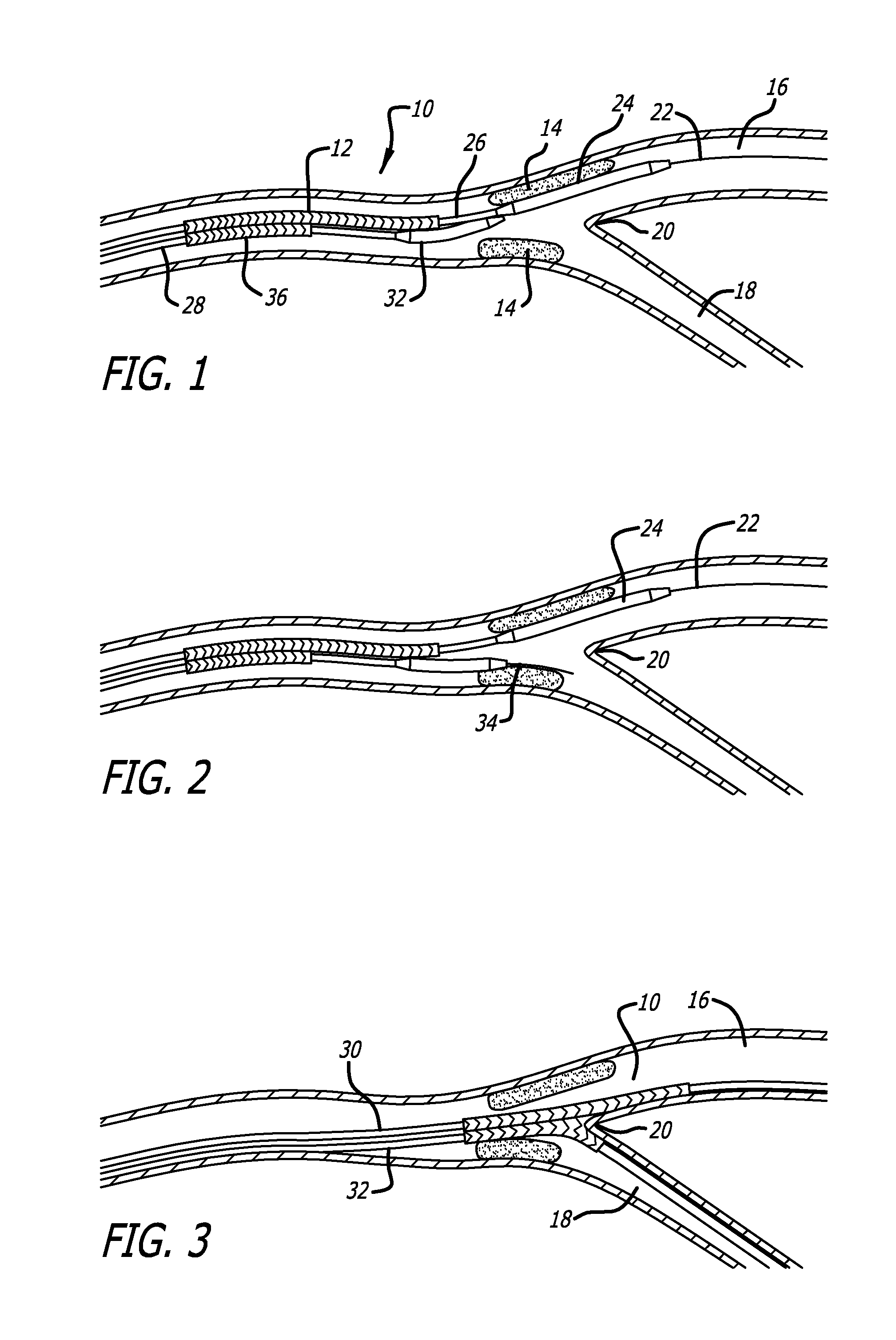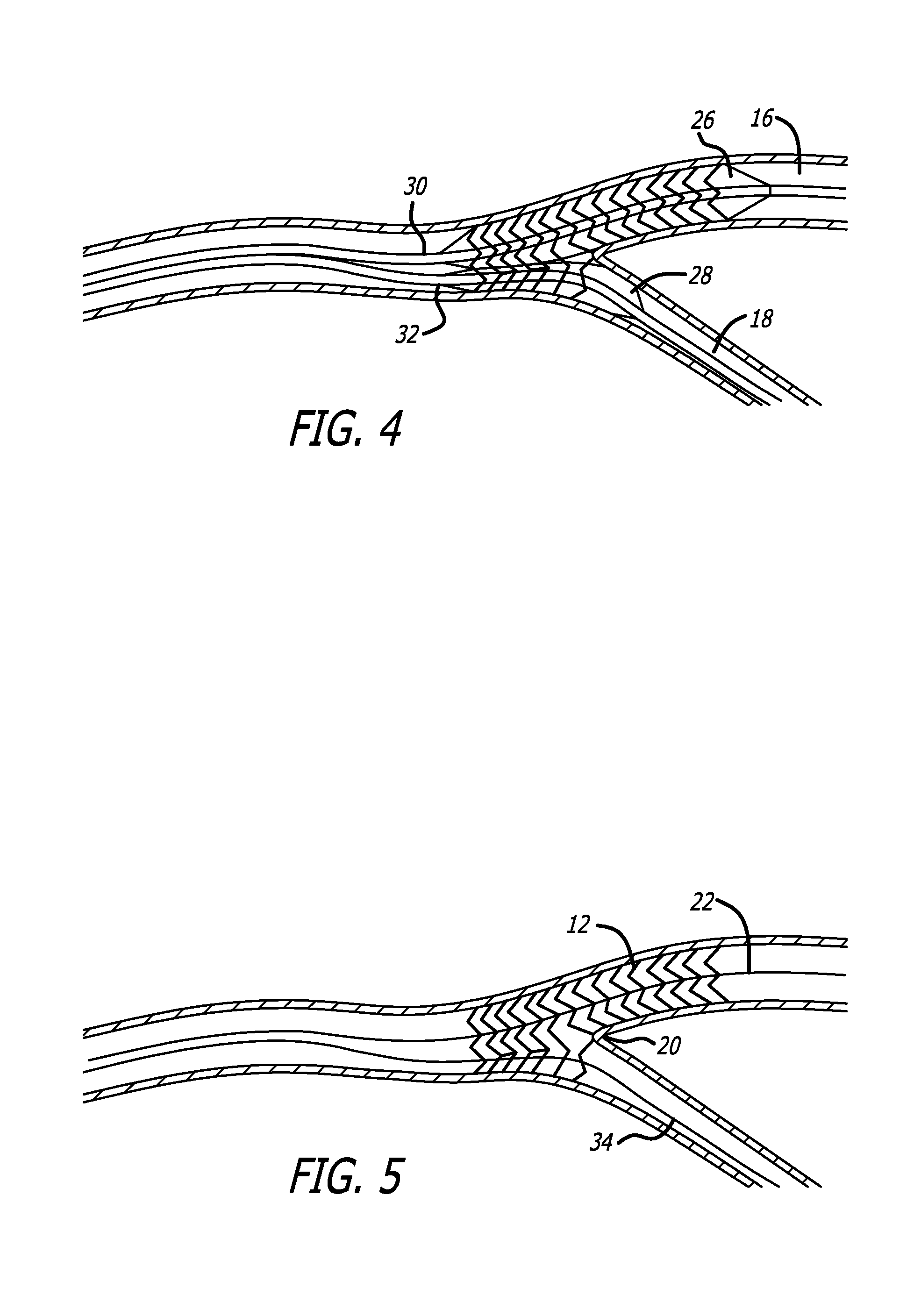Proximal catheter flap for managing wire twist
a proximal catheter and wire twist technology, applied in the field of catheter and stent delivery and deployment assemblies, can solve the problems of affecting the repair of vessels that are diseased at the bifurcation, affecting the axial and overall structural strength of the catheter, so as to avoid structural distortion and increase the axial and overall structural strength. the effect of strength
- Summary
- Abstract
- Description
- Claims
- Application Information
AI Technical Summary
Benefits of technology
Problems solved by technology
Method used
Image
Examples
Embodiment Construction
[0020]The present invention is directed to a catheter system for treating bifurcation lesions. FIG. 1 is a schematic depiction of a preferred embodiment bifurcated stent delivery system 10 advanced into a patient's bifurcated blood vessel having a main branch vessel 16 and a side branch vessel 18. The bifurcated system 10 is used for treatment of plaque 14 located at the bifurcation. The system 10 includes a dual lumen catheter 30, 32 carrying a specially designed bifurcated stent 12 thereon and having one catheter branch 30 extending the entire length of the stent 12 and another catheter branch 32 passing through a port 36 in the stent 12. The pair of catheter branches 30, 32 at the distal ends are held together by an optional joining mandrel 24 and wherein the main branch guide wire 22 extends into the main branch 16. Each branch of the catheter 30, 32 includes a respective expandable member or balloon 26, 28. The side branch balloon 28 exits the stent 12 at about the midpoint of ...
PUM
 Login to View More
Login to View More Abstract
Description
Claims
Application Information
 Login to View More
Login to View More - Generate Ideas
- Intellectual Property
- Life Sciences
- Materials
- Tech Scout
- Unparalleled Data Quality
- Higher Quality Content
- 60% Fewer Hallucinations
Browse by: Latest US Patents, China's latest patents, Technical Efficacy Thesaurus, Application Domain, Technology Topic, Popular Technical Reports.
© 2025 PatSnap. All rights reserved.Legal|Privacy policy|Modern Slavery Act Transparency Statement|Sitemap|About US| Contact US: help@patsnap.com



